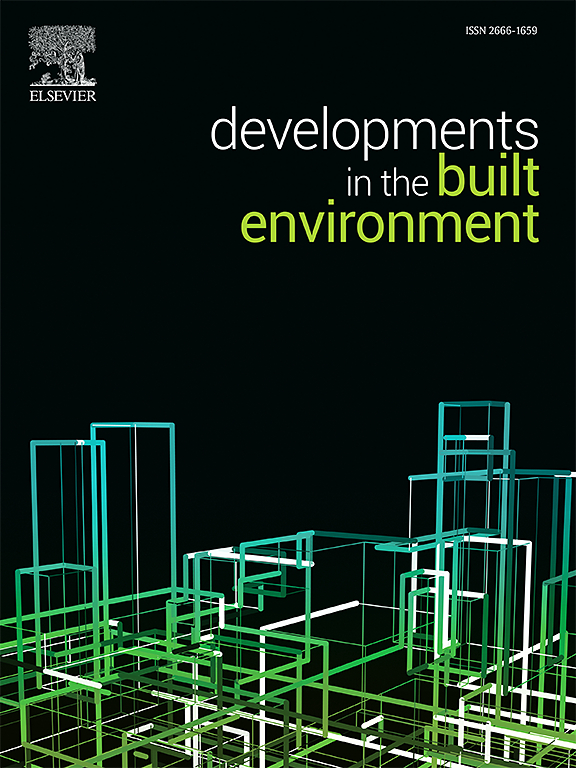探索全玻璃立面的发射率和朝向对城市微气候的影响
IF 8.2
2区 工程技术
Q1 CONSTRUCTION & BUILDING TECHNOLOGY
引用次数: 0
摘要
全玻璃幕墙在现代建筑中越来越普遍,但它们对室外条件的影响仍未得到充分探讨。本研究考察了南澳大利亚阿德莱德一个地点的玻璃发射率(0.84、0.5、0.3、0.07)和表面朝向(0°、45°、90°、135°、180°、225°、270°、315°)对平均辐射温度和长波辐射的影响。使用ENVI-met (V5.6.1),对城市最热和最冷的日子进行了64次模拟。研究结果表明,辐射率较高的区域增加了MRT和lwrad,特别是在夏季。MRT是对发射率变化最敏感的参数,季节变化影响舒适度。在冬季,较高的辐射率略微改善了条件,而在夏季,较低的辐射率改善了室外环境。正面方向0°、225°、270°和315°与最高MRT和LW Rad值有关。这些发现强调了立面材料和朝向在塑造室外小气候中的重要性,并为气候敏感型城市设计提供了有价值的见解。本文章由计算机程序翻译,如有差异,请以英文原文为准。
Exploring the impact of emissivity and orientation of fully glazed facades on urban microclimates
Fully glazed façades are increasingly common in modern architecture, yet their influence on outdoor conditions remains underexplored. This study examines how glass emissivity (0.84, 0.5, 0.3, 0.07) and façade orientation (0°, 45°, 90°, 135°, 180°, 225°, 270°, 315°) affect mean radiant temperature and longwave radiation at a site in Adelaide, South Australia. Using ENVI-met (V5.6.1), 64 simulations were run for the city's hottest and coldest days. Results show that higher-emissivity façades increase MRT and LW Rad, particularly in summer. MRT emerged as the most sensitive parameter to emissivity changes, with seasonal variation affecting comfort. In winter, higher emissivity slightly improves conditions, while in summer, lower emissivity enhances outdoor environment. Façade orientations of 0°, 225°, 270°, and 315° were linked to the highest MRT and LW Rad values. These findings underscore the importance of façade materials and orientation in shaping outdoor microclimates and offer valuable insights into climate-sensitive urban design.
求助全文
通过发布文献求助,成功后即可免费获取论文全文。
去求助
来源期刊

Developments in the Built Environment
Multiple-
CiteScore
7.40
自引率
1.20%
发文量
31
审稿时长
22 days
期刊介绍:
Developments in the Built Environment (DIBE) is a recently established peer-reviewed gold open access journal, ensuring that all accepted articles are permanently and freely accessible. Focused on civil engineering and the built environment, DIBE publishes original papers and short communications. Encompassing topics such as construction materials and building sustainability, the journal adopts a holistic approach with the aim of benefiting the community.
 求助内容:
求助内容: 应助结果提醒方式:
应助结果提醒方式:


